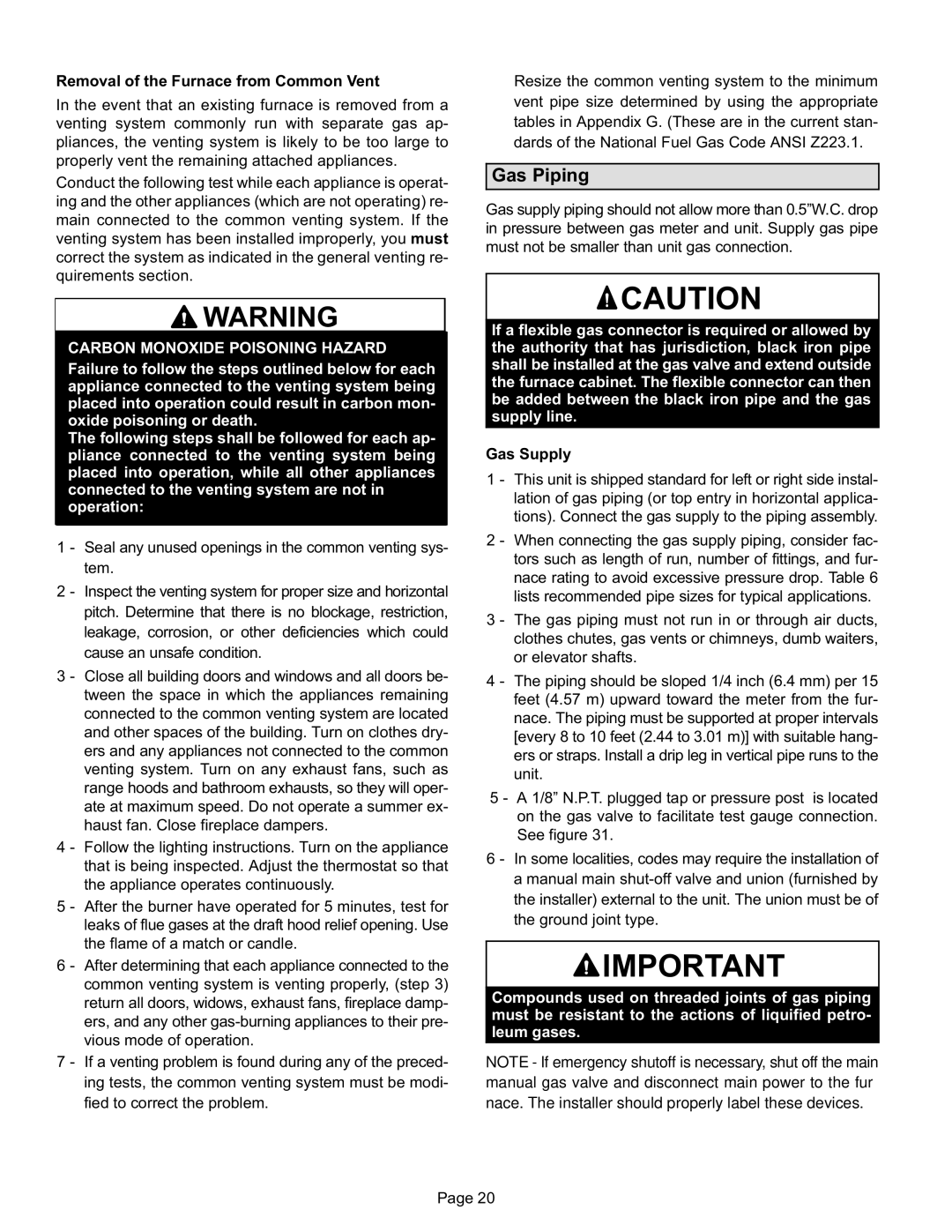EL180UHE specifications
Lennox International Inc. has long been a leader in providing innovative heating and cooling solutions, and the EL180UHE represents a notable advancement in their line of high-efficiency gas furnaces. Designed to meet the demands of residential heating, this unit combines advanced technology with user-friendly operation and significant energy savings.One of the standout features of the EL180UHE is its efficiency rating, with an Annual Fuel Utilization Efficiency (AFUE) of up to 80%. This high efficiency not only helps homeowners save on energy bills but also reduces their carbon footprint. The furnace is equipped with a reliable, multi-speed blower motor, which enhances comfort levels by maintaining consistent air circulation throughout the home.
The EL180UHE employs advanced combustion technologies, such as Lennox's low-NOx burner, which minimizes nitrogen oxide emissions, contributing to a cleaner environment. The unit is also designed with a sealed combustion system that draws air directly from the outdoors rather than from inside the home, leading to improved indoor air quality and increased safety.
Another significant characteristic of the EL180UHE is its whisper-quiet operation. This is achieved through well-engineered insulation and a design that minimizes noise levels, allowing for a comfortable living environment without disruptive sounds. Many homeowners appreciate the quiet performance, especially during the night or in spaces where noise is a concern.
The installation process is straightforward, supported by Lennox's user-friendly design. The EL180UHE is compatible with various home configurations and can easily integrate with existing HVAC systems. Additionally, it has a compact footprint, making it suitable for homes with space constraints.
Further enhancing its appeal, this gas furnace features robust warranty options, reflecting Lennox's commitment to quality and customer satisfaction. Homeowners can rest assured that they are investing in a durable product that has been built to last.
In conclusion, Lennox International Inc.'s EL180UHE gas furnace exemplifies the company's dedication to innovation, efficiency, and reliability in home heating solutions. With its high AFUE rating, advanced combustion technology, quiet operation, and user-friendly design, the EL180UHE is an excellent choice for homeowners looking to enhance their comfort while minimizing energy costs.

